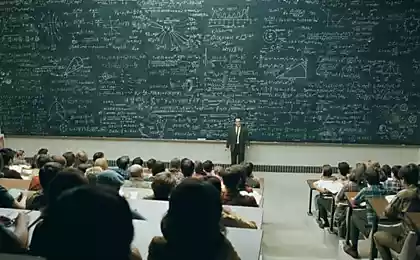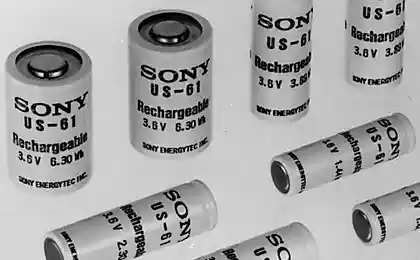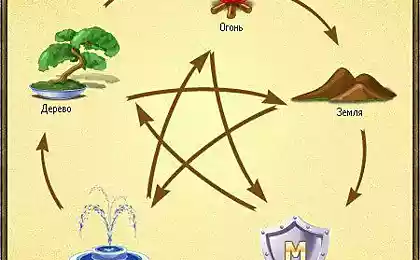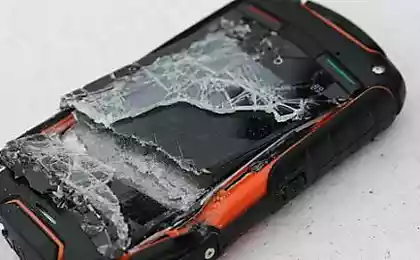469
The option to configure the thermal conductivity of materials
A team of physicists in the National laboratories of Lawrence Berkeley and the University of California recorded the unusual behavior of metals: electrons in vanadium dioxide can conduct electricity without conducting heat.

For most metals the relationship of electrical conductivity and thermal conductivity governed by the Wiedemann — Franz: the better the substance conducts electricity, the better it conducts heat. But this is not so in the case of vanadium dioxide, already known for its unusual properties: the ability to become of a dielectric material, a metal upon reaching 67 degrees C.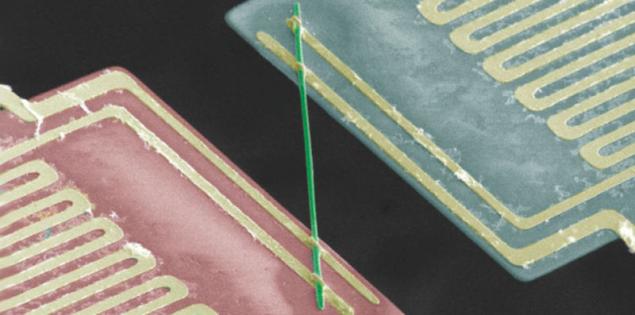
"This is a completely unexpected discovery — said a senior researcher Tsunao Wu. — It signals a definitive break with the law, known from textbooks, which worked in the case of conventional conductors. It has fundamental importance for understanding the behavior of electrons in the new conductors".
With the help of simulation results and experiments with scattering of x-rays, scientists can find out the ratio of the thermal conductivity characteristic of the vibrations of the crystal lattice substances and movements of electrons. To their surprise it was discovered that the conductivity characteristic of electrons at vanadium dioxide, 10 times less than expected on the basis of the Wiedemann — Franz.
"The electrons are moved in unison with each other, more like a stream instead of individual particles, as in normal metals, Wu said. For electron heat is random motion. Normal metals efficiently transfer heat because there is many different microscopic configurations, which can move a single electron. And coordinated, similar to the March of the column the movement of electrons in vanadium dioxide adversely affects the conductivity because of the possibilities of the chaotic motion less."It is important that the amount of electricity and heat that the vanadium dioxide can hold, can be set using other materials, for example, tungsten. This allows you to control the amount of dissipated heat, changing the state of a vanadium dioxide with a dielectric on the metal back.
The discovery of physicists can be used for heat dissipation in engines or to improve the energy efficiency of buildings. "Tuning the thermal conductivity, can be efficiently and automatically dissipate heat on hot summer days, high thermal conductivity, to prevent heat loss in winter, due to low thermal conductivity" — believe physics.
Another refutation of the usual plants was the discovery of scientists at MIT and the max Planck Institute — a new technology for creating metal alloys with unique properties refutes the usual setting that the strength of the alloy is achieved due to the viscosity. published
P. S. And remember, only by changing their consumption — together we change the world! ©
Source: hightech.fm/2017/01/27/metal-electricity

For most metals the relationship of electrical conductivity and thermal conductivity governed by the Wiedemann — Franz: the better the substance conducts electricity, the better it conducts heat. But this is not so in the case of vanadium dioxide, already known for its unusual properties: the ability to become of a dielectric material, a metal upon reaching 67 degrees C.

"This is a completely unexpected discovery — said a senior researcher Tsunao Wu. — It signals a definitive break with the law, known from textbooks, which worked in the case of conventional conductors. It has fundamental importance for understanding the behavior of electrons in the new conductors".
With the help of simulation results and experiments with scattering of x-rays, scientists can find out the ratio of the thermal conductivity characteristic of the vibrations of the crystal lattice substances and movements of electrons. To their surprise it was discovered that the conductivity characteristic of electrons at vanadium dioxide, 10 times less than expected on the basis of the Wiedemann — Franz.
"The electrons are moved in unison with each other, more like a stream instead of individual particles, as in normal metals, Wu said. For electron heat is random motion. Normal metals efficiently transfer heat because there is many different microscopic configurations, which can move a single electron. And coordinated, similar to the March of the column the movement of electrons in vanadium dioxide adversely affects the conductivity because of the possibilities of the chaotic motion less."It is important that the amount of electricity and heat that the vanadium dioxide can hold, can be set using other materials, for example, tungsten. This allows you to control the amount of dissipated heat, changing the state of a vanadium dioxide with a dielectric on the metal back.
The discovery of physicists can be used for heat dissipation in engines or to improve the energy efficiency of buildings. "Tuning the thermal conductivity, can be efficiently and automatically dissipate heat on hot summer days, high thermal conductivity, to prevent heat loss in winter, due to low thermal conductivity" — believe physics.
Another refutation of the usual plants was the discovery of scientists at MIT and the max Planck Institute — a new technology for creating metal alloys with unique properties refutes the usual setting that the strength of the alloy is achieved due to the viscosity. published
P. S. And remember, only by changing their consumption — together we change the world! ©
Source: hightech.fm/2017/01/27/metal-electricity
In Iceland will build a domed oasis on geothermal energy
Remove sagging skin: natural remedies to improve skin elasticity

